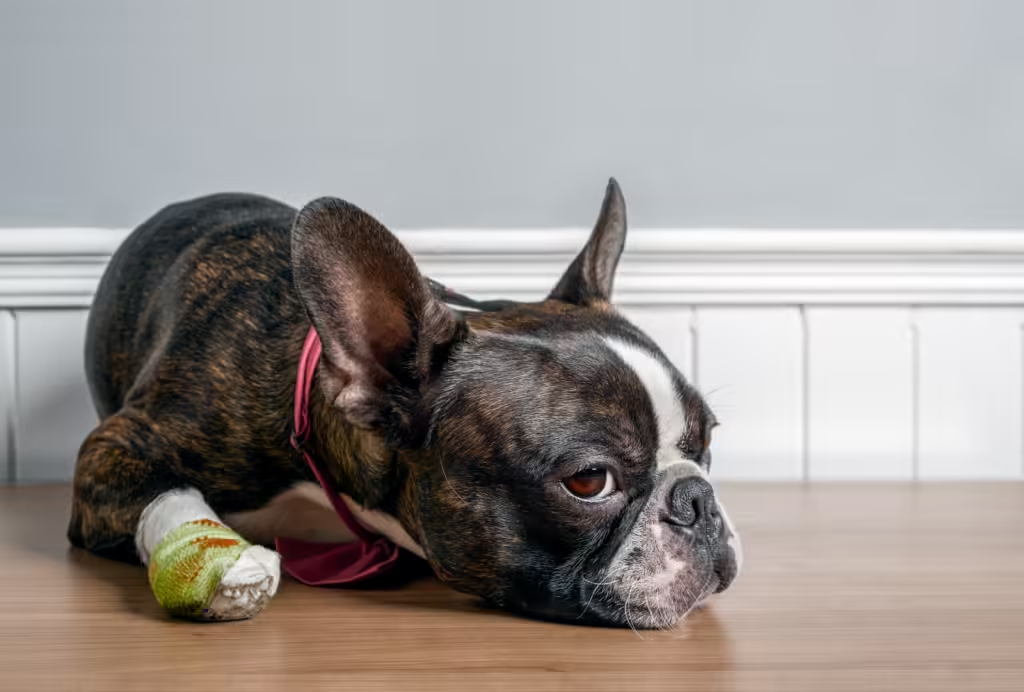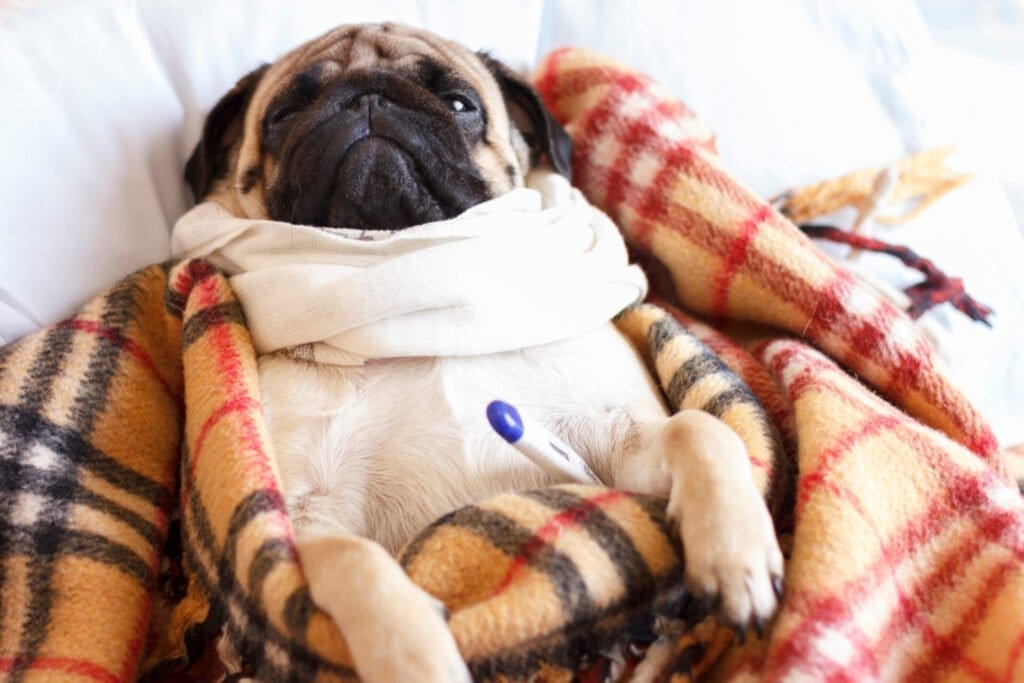Dog First Aid Kit: Must-Have Items to Keep Your Pup Safe & Sound
Every dog owner hopes their furry friend stays safe and healthy. Accidents happen, though, often when we least expect them.
Being prepared with the right supplies helps us handle emergencies quickly and calmly. A well-stocked dog first aid kit should have essentials like gauze, bandages, a digital thermometer, tweezers, styptic powder, an emergency blanket, and your vet’s contact info.

Dog first aid kits can make a huge difference in emergencies—at home or when we’re out exploring. The Kurgo First Aid Kit offers a compact 50-piece set that fits right in a glove box or backpack.
Pet Medical Kit (50 Piece), One Size, Paprika
Key Takeaways
- A basic dog first aid kit needs medical supplies, tools, and emergency contact information
- Portable first aid kits should be easily accessible in cars and during outdoor activities
- Regular checks and updates of first aid supplies ensure readiness for unexpected emergencies
Essentials of a Dog First Aid Kit
A good first aid kit lets us care for our dogs during minor emergencies. The right supplies help us clean wounds, stop bleeding, and check vital signs until we reach a vet.
Gauze, Bandages, and Tape
Medical gauze comes in a few forms, and each has its own job. We need gauze pads for cleaning and rolled gauze for wrapping injuries.
Essential bandaging supplies include:
- Non-stick bandages to cover wounds
- Self-adhering bandages that won’t stick to fur
- Medical tape to secure bandages
- Safety pins to fasten wraps
It’s best to keep several sizes of each. That way, we can handle both tiny cuts and bigger scrapes.
Cleaning and Disinfection
Clean wounds heal better and are less likely to get infected. Here’s what we need for cleaning:
- Saline solution for gentle wound cleaning
- Antiseptic wipes to disinfect injuries
- Antibiotic ointment to prevent infection
- Hydrogen peroxide (but only use it with your vet’s okay)
We try to keep extra cleaning supplies on hand. Sometimes, one wipe just isn’t enough.
Tools and Accessories
The right tools help us respond quickly. A digital thermometer is a must for checking temperature.
Other useful tools include:
- EMT shears for cutting bandages or fur
- Tweezers for splinters
- Tick remover
- Syringes for measuring liquids
- Magnifying glass for a closer look at wounds
We stash these tools in an easy-to-reach spot in the kit. Regular checks make sure everything stays clean and works properly. We should keep these tools in an easy-to-reach section of our kit. Regular checks ensure everything stays clean and in working order.
Additional Items for Comprehensive Care
Beyond the basics, a solid dog first aid kit needs a few extras for different emergencies and to keep our pets comfortable.
Emergency Supplies
We always keep an emergency blanket and instant ice packs handy. They help manage body temperature when things get rough.
Store important phone numbers—your vet, the nearest emergency clinic, and animal poison control—on a waterproof card. A small flashlight with backup batteries is a lifesaver when it’s dark.
A pet evacuation pack matters for disasters. Toss in copies of vaccination records and recent photos of your dog.
The Pet Evac Small/Medium Dog Pak is a comprehensive emergency kit designed for dogs up to 30 lbs, ensuring you’re prepared for evacuations, travel, or unexpected emergencies. It includes a 72-hour supply of food and water with a 5-year shelf life, collapsible bowls, and a well-equipped first aid kit featuring essentials like wound gel, gauze pads, and a Mylar blanket. Additional safety items like a slip lead, LED light, and waterproof ID card holder make it a complete solution for pet emergencies. Packed in a durable red and black backpack, this kit keeps your hands free while ensuring your pet’s safety. Perfect for peace of mind in any situation.
Comfort and Control
Pack a slip leash and a regular leash for backup. If we need to move an injured dog, these make it safer.
We always carry a soft muzzle—any dog might bite if they’re scared or hurting. Practicing with it before an emergency is a good idea.
A collapsible bowl and a couple of favorite treats help keep our pups calm and hydrated. We also toss in a clean towel for warmth or as a makeshift stretcher.
Medications and Treatments
Styptic powder is a must for stopping bleeding from nail cuts or small wounds. Keep it sealed tight.
Check with your vet first about dosing, but common items include:
- Benadryl for allergic reactions
- Saline eye wash for debris
- Milk of magnesia for some poisoning cases
Store meds in labeled containers with expiration dates and clear instructions. A notepad for jotting down what you give and when is surprisingly helpful.
Practical Guides and Resources
We recommend starting with a solid dog first aid manual written just for canines. When you’re in a pinch, it’s a lifesaver.
Making your own DIY kit lets you customize for your dog’s quirks or health needs. Start simple and add as you go.
Pre-packed first aid kits save time and make sure you don’t forget anything vital. Most come with all the basics.
Quick checklist of must-have resources:
- Basic first aid manual
- Emergency vet contact numbers
- Pet poison control hotline
- List of nearby 24-hour emergency clinics
- Digital or printed photos of our pet
- Vaccination records
We find extra first-aid resources from places like the American Kennel Club and ASPCA. Their guides and checklists are pretty handy for building out your kit.
It’s a good idea to check supplies every six months. Replace anything expired and keep your contact info and records up to date.
The guide features tabbed sections for quick access to specific ailments, including snake bites, gunshot wounds, poisoning, choking, cuts, bleeding, lacerations, pests, eye problems, vomiting, ear issues, shock, heat prostration, broken bones, conditioning, and first aid supplies. This organization ensures you can swiftly address emergencies, making it an essential resource for outdoor adventures or situations where immediate veterinary care isn’t available.
Safety and Protection

Having a first aid kit on hand helps us keep our dogs safe if something goes wrong. Now, let’s talk about handling injured pets and treating wounds the right way.
Handling and Restraint
Even the sweetest dogs can act out when they’re hurt or scared. We always approach injured pets gently and wear nitrile gloves for protection.
Speak softly to keep your dog calm. Here’s what we keep nearby:
- A muzzle or makeshift one from gauze
- A thick blanket for wrapping
- Towels for support and restraint
- Clean gloves for each use
Handling bigger dogs is easier with help. Don’t hesitate to ask someone to lend a hand.
Wound Care Essentials
We need the right stuff to clean and dress wounds. Our dog first aid kit should include these:
- Saline solution for wound cleaning
- Sterile gauze pads in several sizes
- Self-adhering bandages that won’t stick to fur
- Styptic powder for minor bleeding
- Cotton balls for antiseptic
- Safety pins to secure wraps
Clean wounds with saline first, then pat dry with gauze. When we bandage, we try to keep it snug but not too tight.
Check the wound daily for infection and change bandages often. Try to keep your dog from licking the area—easier said than done, right?
Frequently Asked Questions
Getting the right items in your dog’s first aid kit can make a big difference. We’ve noticed that having supplies ready helps with minor injuries and brings peace of mind when we’re out and about.
Hey there, what essentials should I pack in my pup’s first aid kit for our adventures?
A complete dog first aid kit needs bandages, gauze, and hydrogen peroxide. We always toss in antibiotic ointment and tweezers, too.
Don’t forget pet-specific stuff like a spare leash and your vet’s contact info. Self-adhering bandages are a game-changer for dogs with lots of fur.
Just wondering, how can I create a homemade first aid kit for my furry friend?
Start with a waterproof bag or container. We recommend adding basic medical supplies like cotton balls, scissors, and saline solution.
Add pet-specific items—like a muzzle and styptic powder for nail bleeds. Zip-lock bags help keep everything organized.
Looking for recommendations: what’s the best dog first aid kit you’ve come across?
The American Veterinary Medical Association’s recommended kit is our go-to. It’s got all the basics, plus emergency blankets and a tick remover.
Kits in bright colors are easier to find when you’re in a hurry. We love that little detail.
Any tips on what to include in a first aid kit for dogs who love to hike?
For hiking pups, we always pack extra paw protection and booties. An emergency foil blanket and collapsible bowl are musts.
We also bring antiseptic spray and antibiotic ointment for cuts and scrapes on the trail.
Curious to know, for hunting dogs, is there a specific first aid item you wouldn’t leave home without?
We never go hunting without QuikClot or a similar clotting powder.
It’s great for small cuts from thorns or brush. Extra gauze and tape always make the list, too.
Hunting dogs seem to find more scrapes and cuts than you’d expect.
Folks, in your experience, what are the must-have items for a dog emergency kit?
We’ve found scissors and tweezers come in handy way more often than you’d think. Non-stick bandages are a lifesaver, too.
I always toss in a digital thermometer so I can check my pup’s temperature if something seems off. Benadryl is a good idea for allergic reactions, but double-check the dose with your vet first.
Oh, and don’t forget an extra collar with ID tags. You never know when you’ll need a backup.











